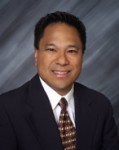During the Covid-19 pandemic, cities, restaurants, and patrons have fully embraced temporary outdoor dining areas. Dining areas are now transformed into pop-up tents with seating located in adjacent parking lots, or “parklets” set-up within the parking spaces in front of the restaurant. Some are enclosed with temporary metal fences, while others are fully-enclosed with plywood walls to shield patrons from street noise.
While the temporary dining areas were implemented with the noble intentions to help struggling businesses stay afloat, they contain one major flaw: they are dangerous. No amount of temporary metal fences, wooden barriers, or K-Rails will properly keep patrons out of harm’s way from nearby vehicular traffic. If cities want to permit these dining areas to be permanently located in the public right-of-way, they must ensure they are safe from vehicular traffic.
Over the summer of 2020, there were numerous reports of vehicles crashing into restaurants and temporary outdoor dining areas around the country. For example, on August 24, 2020 a car crashed into an outdoor dining area in New York City, injuring three people. Reports of similar crashes extend from New York City, New York to Long Beach, California. Rob Reiter, Founder of the Storefront Safety Council, has identified 40 vehicle crashes into restaurants and/or outdoor dining areas around the country since March, resulting in 50 people injured and 8 people killed.
As cities continue to learn about outdoor dining safety, solutions such as temporary, removable, or permanent barriers can be implemented. A comprehensive safety assessment of proposed outdoor dining locations can specify the types of “crash-tested” safety barriers needed. For example, a crash-tested, M30-rated bollard can stop a 15,000-pound vehicle, equivalent to a medium-duty commercial truck, traveling at 30 mph, while an M50-rated bollard can stop a 15,000-pound vehicle traveling at 50 mph.
Bollards are proven to protect people in public areas by preventing vehicle-people contact. Options exist for cities to install them on a temporary or permanent basis. As cities flex to accommodate outdoor dining, they should also flex to ensure that dining remains safe and outdoor public spaces secure from unintentional vehicle-related collisions.
Contact Victor Manalo at Victor@VictorManalo.com for more information. Victor represents Atkore Calpipe Security in Downey, California. Victor Manalo is a former council member and local government consultant. He served on the Artesia City Council for over 11 years and is a Past-President of the California Contract Cities Association. He has worked on pedestrian safety issues as a municipal consultant with Calpipe Security Bollards and as the Director of the Storefront Safety Initiative, whose goal is to put an end to vehicle-into-building crashes.
Calpipe Security Bollards is a part of Atkore International®. They provide bollard products and bollard security services. Manufactured in the United States, Calpipe Security Bollards offers a wide range of bollards including – safety and architectural bollards, lighted and standard landscaping bollards, as well as crash-tested high-security bollards engineered for anti-terrorist or high-threat applications. They are available to provide safety assessments, product specifications, and estimates for crash-tested bollards and other safety devices for cities and other local governments.

